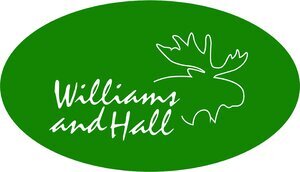Basics of Fishing Lines and Knots
Let’s Knot Get Bored!
Everyone knows we’re dealing with unprecedented times right now. Thoughts of Boundary Waters fishing trips, both past and future, I’m sure, are helping folks to stay optimistic. We’re going to get through this. As we are able to get things going this spring, we will be taking measures to ensure a safe and enjoyable wilderness experience. We will be informing our guests of those practices as we approach the season.
Knowledge Is Power....For Successful BWCA Fishing
In the meantime, there are lots of simple things that canoe adventurers can do to reduce the boredom. The truth is “Knowledge is Power”. Whether you are a doctor or a casual fisherman on a Boundary Waters fishing trip, basic skills and knowledge are the foundation to success.
Once a new fisherman realizes that the weakest link between them and a fish is the fishing line, a new reality is created. There are two parts to this. One is the importance to having good, fresh line that matches the type of fishing it’s intended for. The second, and equally as important are the connections. That includes any point at which line is joined to a lure, a leader, a snap swivel or even the reel itself. Often, rods & reels are stored for an exorbitant amount of time between uses. The eventual user of said rod & reel won’t replace old line and probably won’t even check it out. Old, dry, brittle fishing line is just waiting to break…or break a fisherman’s heart!
Examine Your Fishing Line
There are many types of fishing line out there and this isn’t about which one is best. Rather, this is about learning what’s recommended for the line you use and to know when best to change it. Even then, constant examination of your line is very important. Wear, nicks and abrasions are key signs to, at least, cut and re-tie. A moistened thumb and forefinger slid back and forth on the first two or three feet of line from the lure or leader can easily reveal these bad line signs.
Fishing Line Connections and Knots
Fishing line connections are the other half and equally as important part of this equation. I think more lost fish happen because of bad knots than any other reason. Fortunately, you can have the knowledge and skill to virtually eliminate that problem. Like any problems that have multiple causes, having good line and using good connections, removes that problem and will make it easier to learn more skills to figure out why you might have lost a big fish. Eliminate problems you can control…good for fishing, good for life.
I have friends that actually love to tie fishing knots. It’s kind of like a fidget spinner for fishermen. The point is, with practice, you can learn and perfect a few really good, simple fishing knots that will remain in your repertoire of skills going forward. There are a lot of reliable sources for learning knots. One of the best I’ve found is www.netknots.com With thorough explanations, pictorials and animated “how to” clips. This site provides what you need to hone your knot tying skills.
Think of a BWCA Lunker As You Hunker
So, as you hunker down, take advantage of this information. You’ll know, with confidence, that you’ve help put the odds in your favor the next time you tangle with the big one.
Stay Safe, Be Well, Fish On!
Dave
For more information on BWCA fishing, click here, or call us at 218-365-5837



